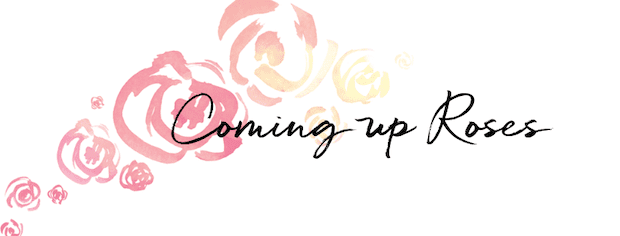WOW WOW WOW I’ve had this post in drafts for a loooooong time. Namely because the topic is SUCH an important one I didn’t want to leave a single thing out! One of my favorite books on the planet is Atomic Habits. Maybe the author sounds familiar – I’ve shared quite a few of his blog posts before in past Weekend Readings, because I freaking loveloveLOVE what this dude has to say. His content is so thorough, which I wholeheartedly appreciate, and he just gives you SO MANY GOOD NUGGETS of helpful information to digest. I wanted to flesh out some of the brightest highlights + best lessons from inside Atomic Habits for anyone who has not yet opened its pages yourself (although HIGHLY RECOMMEND doing so – here it is on Amazon!). This is by no means a full book review or anything – just a peek into some of my highlighted (literally) tips + tricks to get started on making, breaking, and KEEPING habits in your life. Starting first with how to break a bad habit before tackling how to create (+ keep) GOOD habits.
Before diving in, something important to note:
Something I’m frequently asked by readers/followers is “how do you stay motivated??”
Here’s the thing:
Motivation is fleeting. There is not a single soul on Planet Earth who is perpetually motivated, regardless of what social media may have you believing. 😉
The key to getting + staying motivated is getting + keeping consistent with certain routines in your life, so that the things that might otherwise keep you FROM being motivated are set on autopilot. You have to eliminate the choice. Nix the need to think, or the ability to talk yourself out of something that you know you should do, but kinda sorta really don’t feel like doing in an un-motivated moment.
From there, you can continue to check things off of your list without relying on a temporary feeling to make it happen.
Enter, habits.
When you can make your necessary routines habitual, you make the necessary shifts + changes in your life so that you can’t and don’t fall victim to chance. Waiting for motivation is like waiting for sunshine. What do you do on days when it rains? Just sit around praying for sunshine? Because that ain’t productive, girlfriend!
Don’t waste the wait – make a habit to get through it.
SO, all that to say – this post took awhile to make happen because it accidentally became multiple posts. I went so far down the habit rabbit hole that it was, like, 4,000 words. And I get that ain’t nobody got time to read a book over lunch. 😉
TODAY we’re chatting two things:
- How to discern good versus bad habits in your life already
- How to break a bad habit
Then in another post, we’ll chat two more things:
- How to form a GOOD habit
- And how to KEEP it
Cool? Cool. Let’s do this.

How to discern good versus bad habits in your life
The book talks about we can basically be in two states of “productivity” as humans: motion and action. Motion might feel productive, but it’s really not – it’s an in-between period of “research” or “preparation” that keeps us feeling motivated + productive without actually moving the needle significantly on, well, anything.
Action, on the other hand, brings about more significant change in something – it’s more than just “busy work.”
Basically, we have to look at ALL habits in our lives and then figure out what they’re bringing about. The book author recommends tracking your habits for some time to actually figure out what even IS habitual for you, since by nature habits become sub-conscious or second-nature and we might not even be consciously realizing we’re doing something as often or as regularly as we are! (CRAZY, right??). So, try tracking everything that you do for a week straight. But like, super detailed. It might look like:
Monday: 6 am wake up, hit snooze until 6:05. Get out of bed. Put on bathrobe. Go downstairs. Brew a cup of coffee. Drink coffee while reading the daily newspaper. After coffee is complete, go back upstairs, change into workout clothes, put on sneakers. Go outside for a run. Etc. Suuuuper detailed is IMPORTANT, since habits aren’t just a one-and-done separate or indepedent task – they’re bookended by other psychological things that drive why we do what we do. Habits in general are cyclical in nature, and it all comes down to the brain.
First, you have to have a CUE. The cue is something that essentially triggers your brain to engage in a specific behavior, for better or worse.
Next, there’s a craving. A craving comes when you now have a desire to change your internal state in some way – we don’t actually crave the habit itself, but the change in STATE it brings.
Then, there’s your response. This is the actual habit – the actual action or thought happening in real time.
Finally, there’s a reward, which is whatever the end goal of any habit is. The cue is about noticing the reward, the craving is about wanting the reward, and the response is about getting the reward.
If any of these four things DON’T happen or AREN’T in place, the habit won’t happen, either.
Noticing your own patterns is what helps you identify bad habits in the first place, so how to break a bad habit can come next. For myself, I found a bad habit by noticing when I would end up wasting time playing Candy Crush on my phone. It’s the literal ONLY game on my phone because I hate anything that feels like “wasting time,” but this ONE just had me hooked. I realized that the most time spent on it was after I got into bed, IF I decided to pick my phone back up (because usually I’m not on my phone IN bed – it’s on my nightstand next to me), if/when J and I went to bed at different times if he had to work late. Getting into the empty bed by myself was my cue. I’d pick up my phone and play until I beat a level or two as a habitual routine, then, and then have a reward of feeling like I was more relaxed/less anxious from being mindless for a hot sec. Really, there are healthier, better ways to get the same end result – the reward – without beating level 672 of Candy Crush.
Also, I heard it said once that how to break a bad habit really comes down to one thing: substituting over stopping.
Your brain will still want the REWARD – it’s just about figuring out how to get that reward and satisfaction without engaging in a potentially bad, harmful, or unhealthy behavior to make it happen.
SO, this brings us to…
How to break a bad habit
Basically, breaking bad habits is all about inverting the four laws of behavior change. The four laws are what help us create + keep GOOD habits, so turning them on their heads is the proven scientific way to reverse habits (makes sense, right?).
Here’s how to break a bad habit once and for all:
- Make it invisible. The key is to reduce your exposure to the CUE, or trigger. Sometimes this means changing your environment, since changing your environment can be enough of a shake to nix the routine. This might mean taking a different route to work if you’re trying to avoid the corner donut shop, or working out in the public gym instead of at-home if you’re constantly stopping workouts to be on your phone instead.
- Make it unattractive. This comes down alot to your mindset. If you can show yourself all of the benefits of avoiding the bad habit, it helps cut it once and for all. For example, if you’re trying to quit smoking, you might print out a list of ALL of the proven bad effects of smoking, from rotting teeth to lung cancer. Tape it in front of your desk or mirror – somewhere you’ll see it constantly. This perpetual reminder isn’t everything, of course (there’s 3 other things that need to happen with it!), but it’s something to help convince your brain to braek the habit.
- Make it difficult. Basically, make it harder to actually access or do the habit. Increase friction. Use some sort of commitment device to help keep on track, and make it so that you have to take quite a few more steps or make quite a few more choices to ACTUALLY do the bad habit. Sometimes how to break abad habit comes down to making it really freaking hard to do.
- Make it unsatisfying. Sometimes you just need someone watching over your shoulder to cut the cord; get an accountability partner or make a habit contract so that actually doing the bad habit has painful, embarassing, or public consequences. It’s why some folks have “swear jars” or pay a friend if they engage in the bad habit – it works!
Once a bad habit is broken, you can substitute it with a GOOD habit, and then work to keep that up instead so that you’re getting the end result or end feeling without any bad repercussions in the middle. But m0re on that to come.
OK PHEW. Happy Monday.
We’ll chat more on how to make a good habit and KEEP it in a later post – for now, I need more coffee. 😉
Do you know how to break a bad habit now and feel ready to make it happen?




